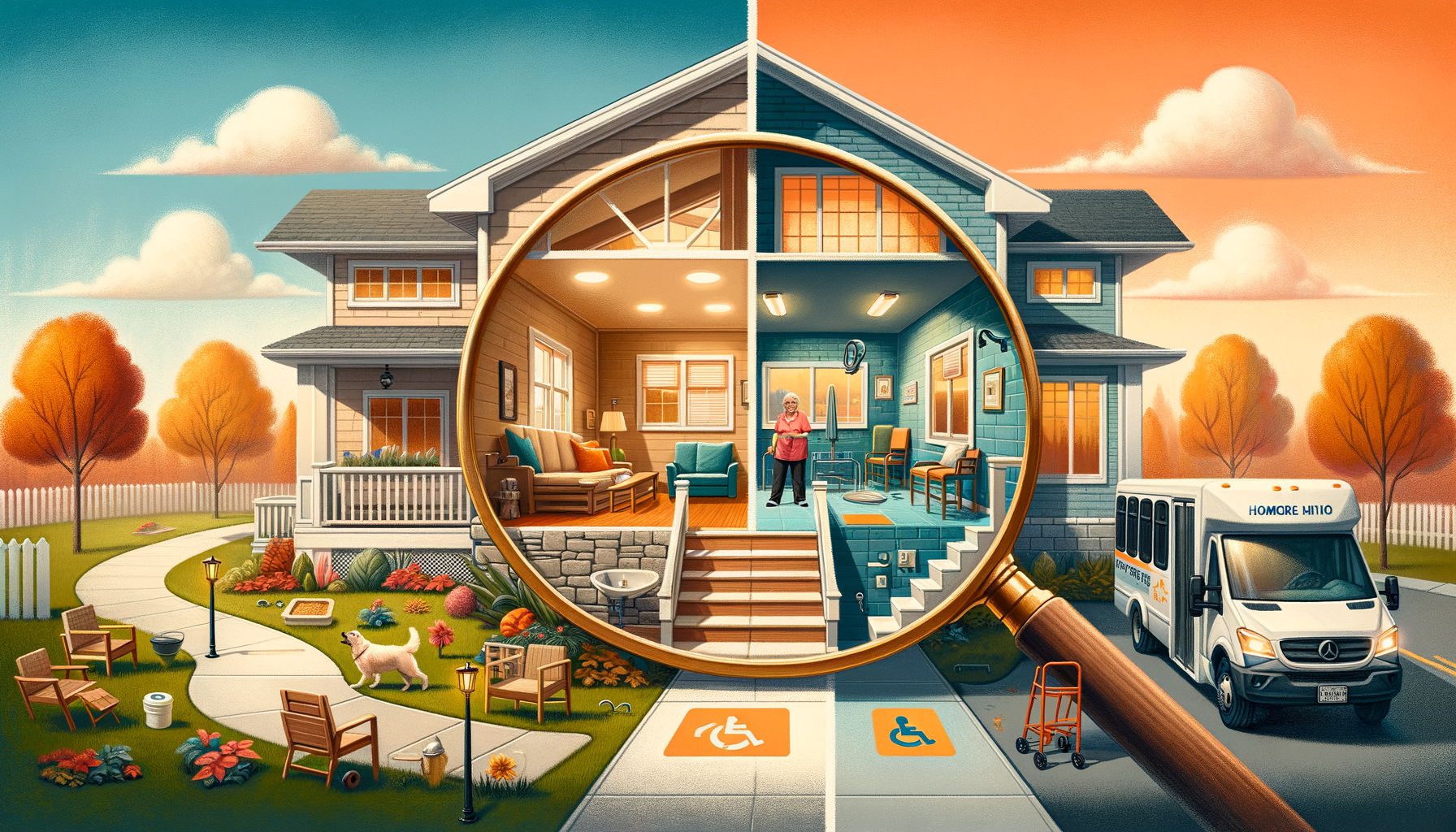“Aging Gracefully at Home: Expert Tips and Cost Comparisons with Assisted Living”

A growing number of older adults are choosing to age gracefully within the comfort of their own homes, a concept commonly referred to as “aging in place”. This trend reflects not only personal preferences but also practical realities as assisted living facilities become increasingly expensive. Therefore, planning for the future and taking proactive steps can not only enable you to enjoy your sunset years in the place you love, but also prove to be a cost-effective strategy.
There’s much to consider while planning to age in place. According to industry professionals, designing a home tailored to the potential needs of an aging individual can be a complex process. It is crucial to assess the accessibility features of your home—can a wheelchair fit through your doorways? Is there space for a walk-in shower? Are there grab bars in the bathroom? It’s the little details that can make an enormous difference.
At the same time, aging in place doesn’t need to equate to a complete home renovation. It’s about incremental changes that promote safety, comfort, and convenience as people advance in years. A variety of aging-in-place technologies, such as medication reminders, emergency call systems, and video doorbells, are redefining what it means to grow older within one’s own home.
When deconstructing the costs associated with aging in place, it becomes clear that it’s a feasible option for many. Although there’s an initial investment involved in readying your home, the long-term costs of aging in place can be lower compared to assisted living facilities. With average costs for assisted living facilities nearing $4,000 monthly, home adjustments can be an economically wise alternative.
That said, the choice to age in place doesn’t only boil down to costs. The emotional and psychological factors associated with residing in the comfort of one’s own home are significant too. Many individuals find solace in staying connected to their community, maintaining their independence, and living amidst familiar settings—factors that contribute to their overall quality of life.
To summarize, several factors mandate careful thought while considering aging in place. These include home design, cost implications, available technologies, and psychological factors.
Let’s delve deeper into each of these elements:
**1. Home Design for Aging in Place:**
The home should be adaptable and accessible for aging in place. Architectural designs might need review to suit the lifestyle changes that come with aging—from simple modifications such as adding grab bars, non-slip floor tiles in the bathroom, and improved lighting, to more extensive changes like wide doors, lowered countertops in the kitchen, and a main floor bedroom and bathroom.
Accessibility modifications may also extend to outdoor areas. Safe, well-lit paths, easy-to-navigate steps or ramps with handrails, a place to rest, can make moving about outdoors more accessible for older adults.
Installing healthcare facilities and equipment such as a walk-in bathtub or a lift can be beneficial. Contrary to popular belief, these modifications don’t have to make your home look sterile or clinical; careful design and planning can ensure aesthetics are preserved.
**2. Costs and Funding:**
Given the rising costs of assisted living facilities, retrofitting a house might be a cost-effective solution over the long haul. Despite the apparent upfront investment such alterations demand, they could be significantly cheaper than monthly payments in a retirement facility.
Consider the annual costs—there’s a wide scope for savings. It’s worth exploring grant programs, loans, and rebates to finance home remodeling for aging-in-place like the Department of Housing and Urban Development’s programs geared towards home improvements.
**3. Technology and Aging in Place:**
Technology is becoming a critical support for aging in place—and it’s not just about emergency medical pendants anymore. Home automation systems, sensors that monitor health and wellness, mobile apps that facilitate social connections, and voice assistants that provide reminders and updates, all play a significant role in creating a safe, connected, and convenient living environment for older adults.
Telemedicine is ensuring healthcare reaches the homes of the elderly, thus eliminating the need for regular doctor visits. Digital tools such as smartphone apps also make it easier to monitor health conditions, engage with healthcare professionals, and even order medications online.
**4. The Emotional Factor:**
Aging in place offers the luxury of remaining in a cherished, comfortable environment—this goes a long way in preserving the mental health and emotional stability of older individuals. A sense of familiarity, routine, control, and independence boosts their morale and overall well-being.
Living in one’s own home allows for a continued engagement with their community and close proximity to friends and family. Besides, having pets around—a comfort often lacking in assisted living settings—could have therapeutic benefits.
**5. Future Planning:**
With life expectancy gradually increasing, it’s necessary to consider practical steps for the future. Professionals suggest considering in-home care options if the need arises. Depending on the type of care needed, from housekeeping to personal care, there are home care agencies that can provide customized services.
In conclusion, planning to age gracefully within the comfort of your own home is achievable. Through careful thought, preparation, and wise implementation of modern technology—all while considering potential cost savings—older adults can successfully age in place, in control of their lives and routines. It’s never too early to plan for your golden years, ensuring your home nurtures you through every phase of life.
